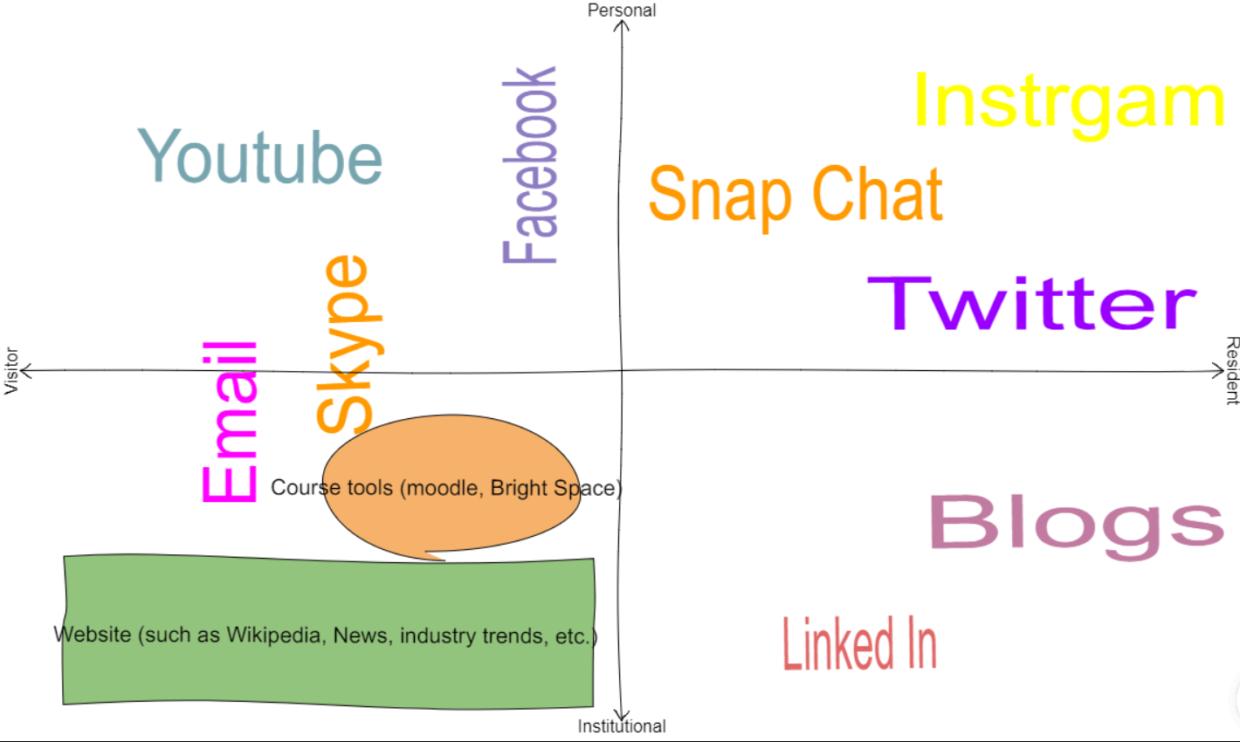In the perspective of the digital visitor and resident model, it is clear that students need to develop a professional network through leaving footprint online which means that build the network in the resident continuum. Personal and institutional flatforms, however, can both develop a student’s professional network. People cannot separate personal network and professional network absolutely clear because we tend to be close with people who like us. Consequently, friends from school can be future colleagues, and colleagues can be friends. Therefore, there are specific platforms, such as blogs and LinkedIn, that can help students to shape their personal presence better in building professional network. However, building a complete and maintainable professional network require students to use every platform in the resident axis including personal platforms.
To expand professional learning network, any online platforms are able to provide students a place to connect and learn. However, interactive learning is better than learning passively which conclude that students could use resident and institutional platform to build professional learning networks. Blog system such as Word press are valuable platform for students to demonstrate their opinions. They are able to not only discuss their ideas with peers but also to reach and initiate discussions with students from other institutions or even experts around the world, regardless time and distance limitations. LinkedIn can also be a useful tool for professional network developing. Students are able to maintain an ideal digital identity through the platform and build both strong and weak tie of connections with others. Moreover, students could complete certificates and get up-to-date industry news through the platform; these learning can be an asset for a student to establish a way to be a lifelong learner and get prepared for the future career.
I believe that maintaining a desirable digital identity and reputation need me not only to maintain my professional or institutional accounts but also be careful of what I post in personal accounts. In my network, I am currently engaged in visitor platforms more than residentials. The bright side of this situation is that I can start to build my digital identity from now without worrying negative impact of any past posts. I believe that I can post positive things about my life to personal platforms sometimes, but it should not look like bend the truth of messy lives into picture-perfect moments. On the other hand, I should keep using the blog system and start to connect to people in LinkedIn.
If I were an employer, I would really want to know that whether my candidate is really the one I want to hire, or is he or she sugar code their life and resume to make themselves look nice. I would search contents that a candidate mentioned in the resume such as education and work experience to verify, and I might also check the candidate’s social media such as LinkedIn and Facebook to see if the person is really what he or she say they is. Employers get this information can be both a hinder or an opportunity for a person. employers might decide to hire an underqualified candidate because the person other qualities discovered through the internet. On the other hand, people tend to connect with others who likes them, and a candidate can be disqualified simply because they are not alike the employer.
White, D. (2012). V&R mapping at Educause. David White. Retrieved 2 October 2020, from http://daveowhite.com/vr-mapping-at-educause/.
